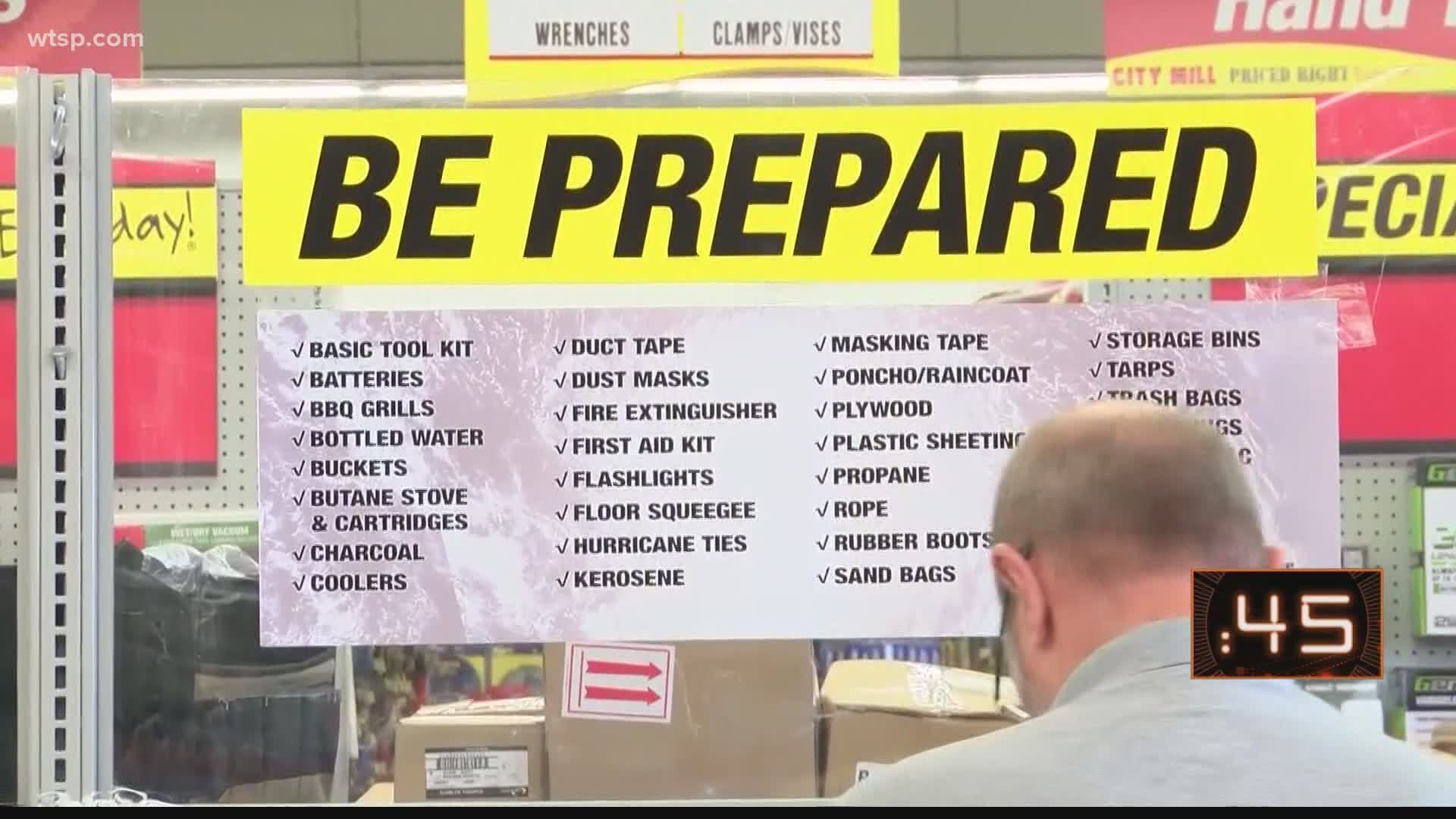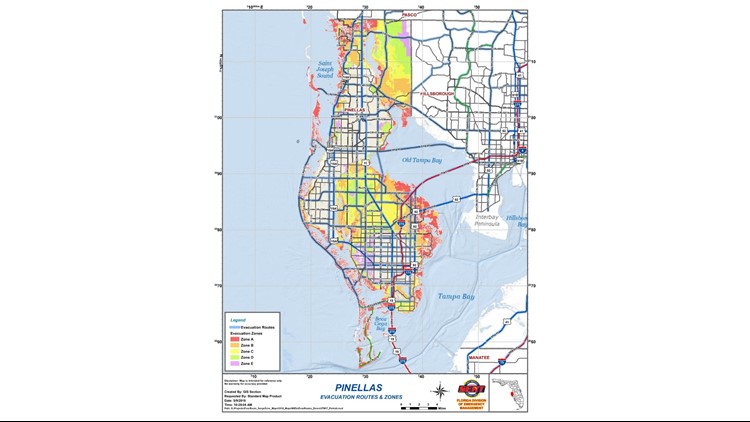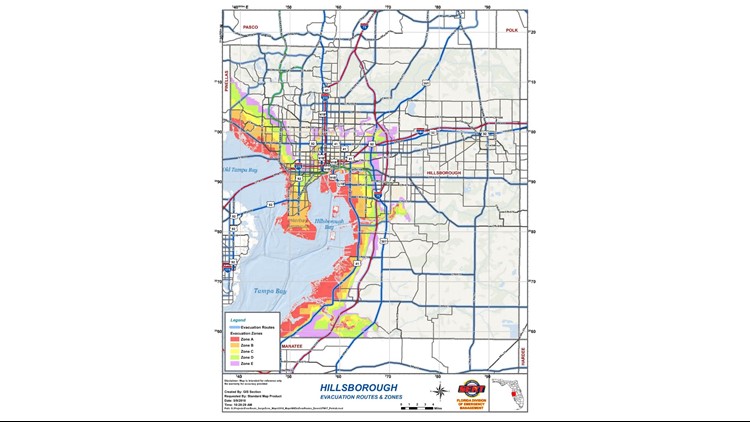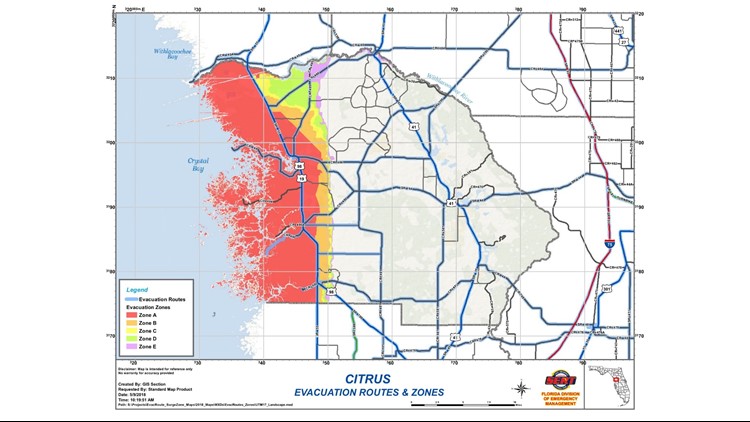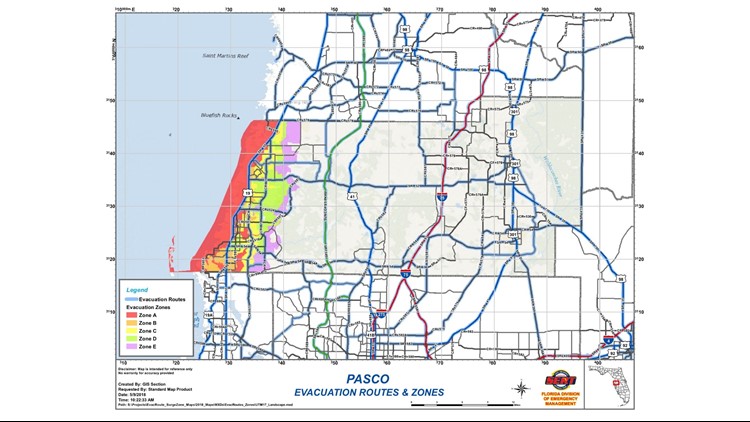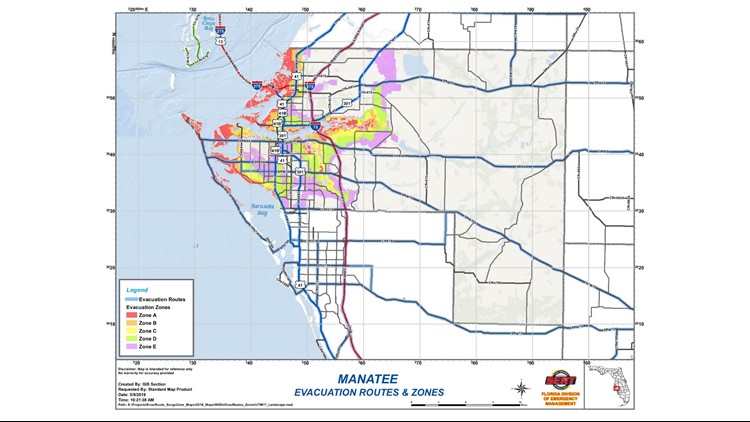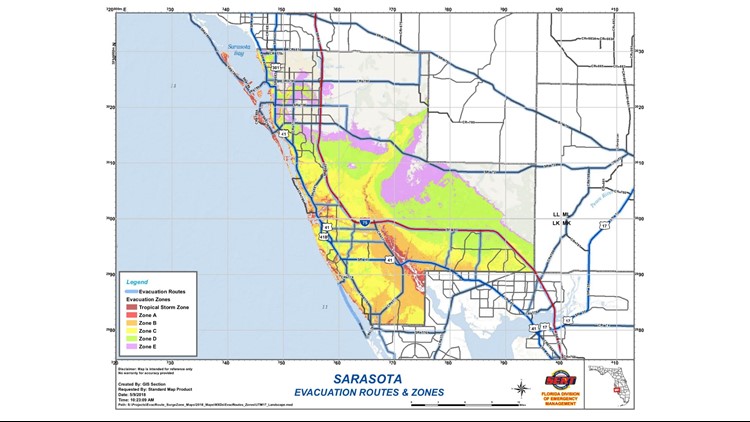Hurricane season begins June 1: What do you need in your emergency kit?
Preparing during the coronavirus pandemic means you'll need a few extra supplies this season.
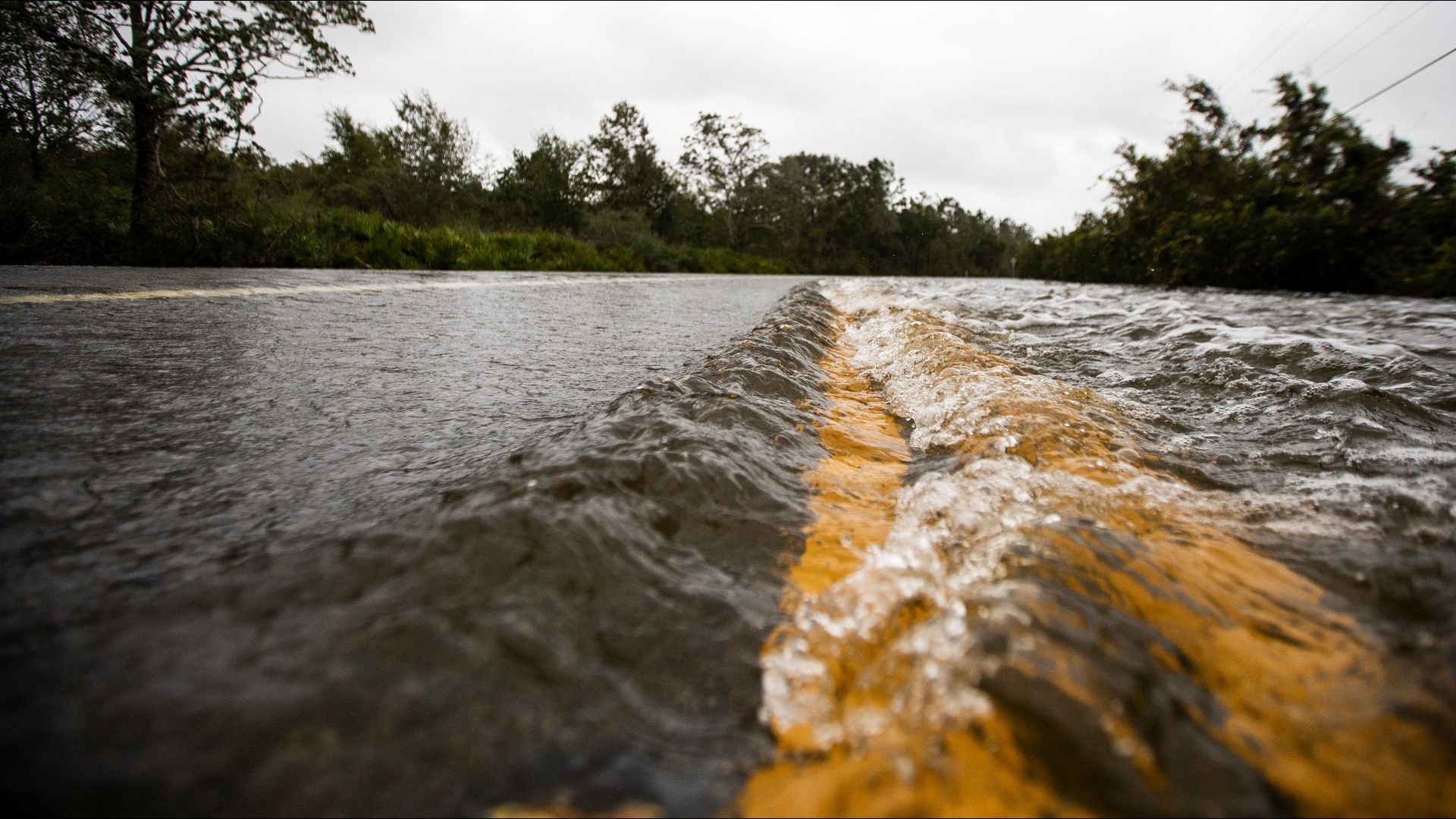
Busy. That's how meteorologists expect the 2020 Atlantic hurricane season to be.
It's the last thing coastal communities need as the United States tries to navigate isolated violence and a global pandemic. But, weather doesn't wait. Hurricane season begins on June 1.
The National Hurricane Center is already monitoring the possibility of tropical development in the gulf later this week. Already on Sunday, meteorologists were tracking a disturbance with a 50 percent chance of developing in the next 48 hours and a 60 percent chance of becoming more organized in the next five days.
CONTEXT FROM 10 TAMPA BAY: It's not totally uncommon to see a tropical system before the official start of hurricane season
Two named storms appeared before the season even began: Tropical Storm Arthur and Tropical Storm Bertha. Arthur lightly brushed by the coast of North Carolina, while Bertha brought heavy rain when it made landfall near Charleston, South Carolina.
And, those storms are likely only the beginning.
The National Oceanic and Atmospheric Administration is predicting 13-19 named storms, 6-10 hurricanes and 3-6 major hurricanes this season. The agency anticipates a 60-percent chance of an above-normal season.
The Atlantic hurricane season runs from June 1 through Nov. 30.
The 2019 Atlantic hurricane season saw six hurricanes, three major hurricanes, including Hurricane Dorian, and 18 named storms.
If you look back through history, tropical systems can and have formed (at some point) every month of the year. According to NOAA data from 1851 to 2018, February and March have had the fewest tropical storms with one apiece. September has had the most with 616.
The peak of hurricane season is September 10.

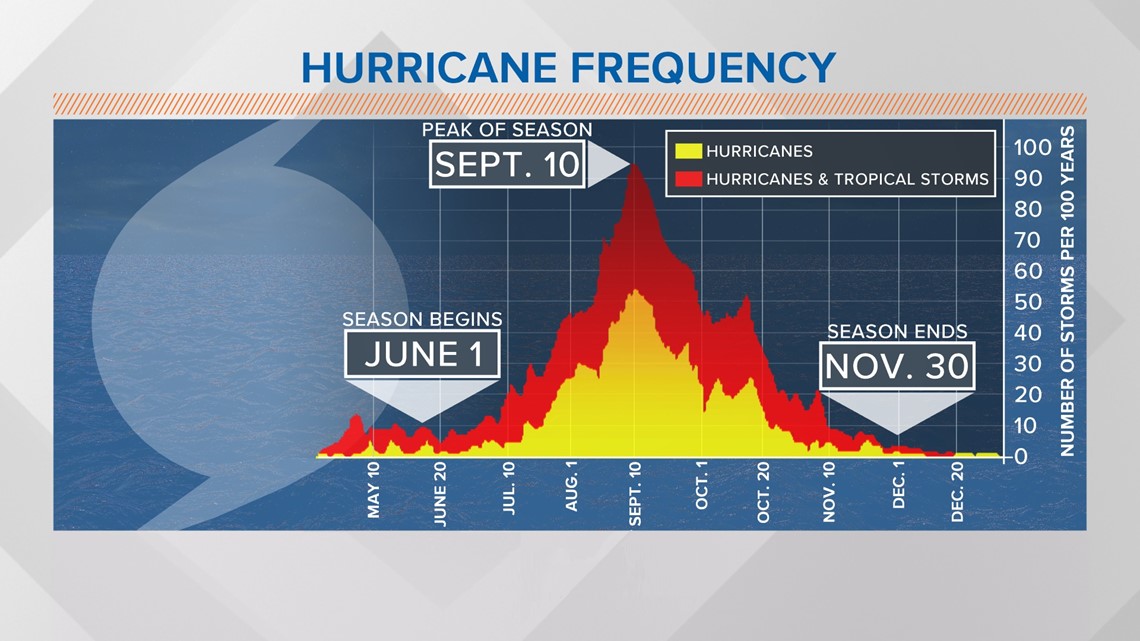
What supplies go in a hurricane kit?
The coronavirus pandemic means there are some extra items you'll want to include in your hurricane supply kit. Those include face masks, hand sanitizer and disinfectant wipes.
If you're new to Florida, we've got you covered. Here's a quick list of everything you'll want to be prepared for hurricane season, as recommended by the state's emergency management division:
General:
- At least two weeks supply of medication, medical supplies used regularly and a list of allergies
- List of the style, serial number and manufacturer information of required medical devices
- Flashlight (Do not use candles, and be sure to have enough batteries)
- Radio (Battery operated or hand-cranked radio, an NOAA weather radio)
- Cash (Banks and ATMs may not be available after a storm)
First Aid:
- First aid manual
- Sterile adhesive bandages of different sizes
- Sterile gauze pads
- Hypoallergenic adhesive tape
- Triangular bandages
- Scissors
- Tweezers
- Sewing needle
- Moistened towelettes
- Antiseptic
- Thermometer
- Tube of petroleum jelly
- Safety pins
- Soap
- Latex gloves
- Sunscreen
- Aspirin or other pain reliever
- Anti-diarrheal medicine
- Antacid
- Laxative
- Cotton balls
- Q tips
Important Documents (Items should be kept in a waterproof container)
- Insurance cards
- Medical records
- Bank numbers
- Credit card numbers
- Copy of social security card
- Copies of birth and/or marriage certificates
- Other personal documents
- Set of car, house and office keys
- Service animal ID, veterinary records, and proof of ownership
- Information about where you receive medication, the name of the drug and dosage
- Copy of will
Food and water
- Enough food for at least 7 days (Nonperishable packaged or canned foods and drinks, snack foods, juices, baby food and any special dietary items)
- Non-electric can opener
- Paper plates
- Napkins
- Plastic cups
- Utensils
- Water (1 gallon per person, per day)
Clothing
- Rain gear
- Study shoes or boots
Specialty items
- Make sure to include any specialty items for babies, small children, people or are elderly or anyone in your home who has a disability
Car
- Keep your car or truck gas tanks filled
Phone numbers
- Maintain a list of important phone numbers, including for your county emergency management office, evacuation sites, doctors, banks, schools and veterinarians
- Have a number for an out-of-town contact if you need help; could be family or friends
Coronavirus supplies
- Face masks
- Disinfectant wipes
- Hand sanitizer
Pet care
- Pet food and water
- Proper identification
- Medical records and microchip information
- A carrier or cage
- A muzzle and leash
- Water and food bowls
- Medications
- Supplies for any service animals
Know your evacuation zone
The Tampa Bay area is especially susceptible to storm surge from hurricanes and tropical storms. Like all Florida's coastal communities, there are listed evacuation zones in our area to help people get out of harm's way before a storm strikes.
It's critical that you know your evacuation zone before the storm arrives. Type your address into the interactive map below. If you can't see it when you scroll down, click here for a direct link.
Beyond your evacuation zone, it's equally important to know the evacuation route you'd take if you were told to get out. Click here for detailed information about evacuation routes and to find potentially life-saving storm surge information.
Of course, one of the best places to get instantly notified about evacuations, hurricanes and tropical storms is to sign up for the 10 Tampa Bay app. It's free and includes updates directly from our meteorologists.
If you're forced to leave your home, you'll want information about shelters. Click here for a shelter index for the entire state of Florida.
If you live outside of Florida, we care about your safety too. Click here for evacuation zone information impacting other states.
Tampa Bay-area evacuation zones
Understanding hurricane strength
The Saffir-Simpson Hurricane Wind Scale gives hurricanes a rating based on their sustained wind speeds. Hurricanes that reach Category 3 are classified as "major hurricanes" because they are more likely to cause "significant" property damage and could cause many deaths. That said, Category 1 and 2 storms are still dangerous and shouldn't be ignored.
Watch Video: What do the different hurricane categories mean?

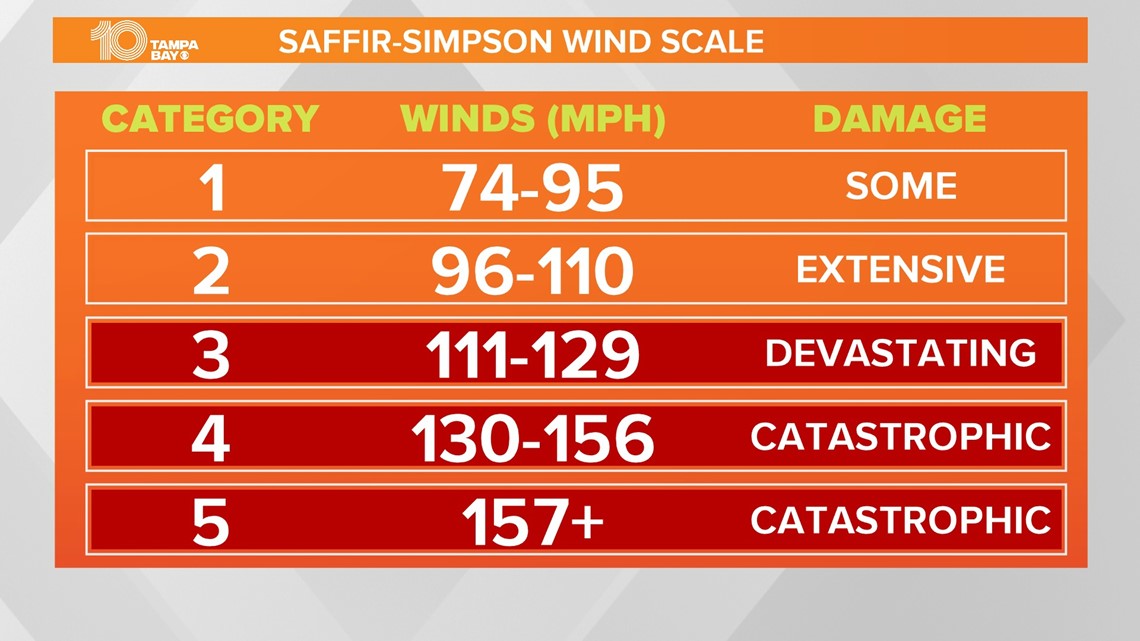
Below are the definitions, as presented by the National Hurricane Center:
Category 1
- 74-95 mph winds
- Very dangerous winds will produce some damage: Well-constructed frame homes could have damage to roof, shingles, vinyl siding and gutters. Large branches of trees will snap and shallowly rooted trees may be toppled. Extensive damage to power lines and poles likely will result in power outages that could last a few to several days.
Category 2
- 96-110 mph winds
- Extremely dangerous winds will cause extensive damage: Well-constructed frame homes could sustain major roof and siding damage. Many shallowly rooted trees will be snapped or uprooted and block numerous roads. Near-total power loss is expected with outages that could last from several days to weeks.
Category 3 (Major)
- 111-129 mph winds
- Devastating damage will occur: Well-built framed homes may incur major damage or removal of roof decking and gable ends. Many trees will be snapped or uprooted, blocking numerous roads. Electricity and water will be unavailable for several days to weeks after the storm passes.
Category 4 (Major)
- 130-156 mph winds
- Catastrophic damage will occur: Well-built framed homes can sustain severe damage with loss of most of the roof structure and/or some exterior walls. Most trees will be snapped or uprooted and power poles downed. Fallen trees and power poles will isolate residential areas. Power outages will last weeks to possibly months. Most of the area will be uninhabitable for weeks or months.
Category 5 (Major)
- 157+ mph winds
- Catastrophic damage will occur: A high percentage of framed homes will be destroyed, with total roof failure and wall collapse. Fallen trees and power poles will isolate residential areas. Power outages will last for weeks to possibly months. Most of the area will be uninhabitable for weeks or months.
Interactive Radar
2020 Tropical Cyclone Names
Here are what this seasons' storms would be called, as selected by the World Meteorological Organization. We've already had Arthur and Bertha. So, the next one would be Cristobal.
- Arthur
- Bertha
- Cristobal
- Dolly
- Edouard
- Fay
- Gonzalo
- Hanna
- Isaias
- Josephine
- Kyle
- Laura
- Marco
- Nana
- Omar
- Paulette
- Rene
- Sally
- Teddy
- Vicky
- Wilfred
For more tropical weather information, check out the 10 Tampa Bay Hurricane Headquarters page, which includes county-by-by county resources so you can sign up for emergency alerts in your area.
What other people are reading right now:
►Stay In the Know! Sign up now for the Brightside Blend Newsletter


